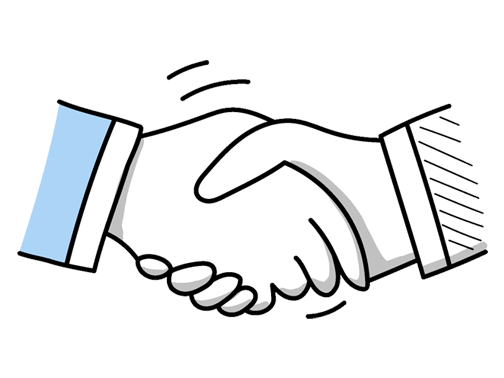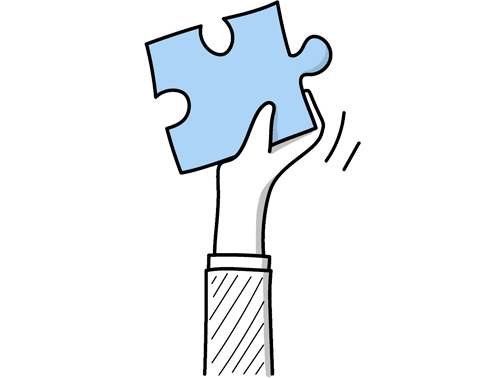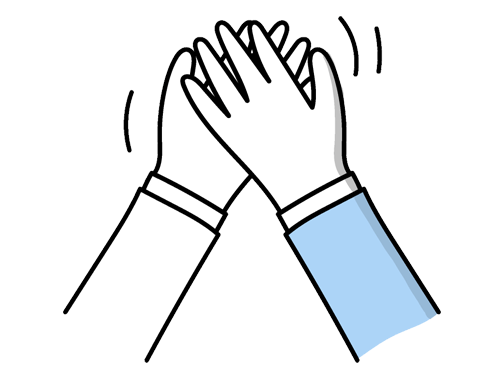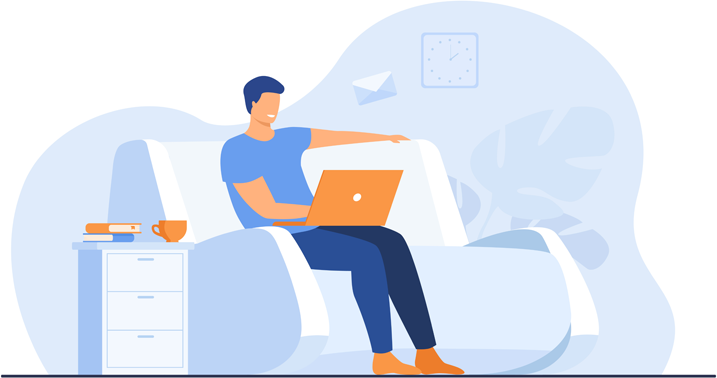Instructional Designer Interview Questions (2025 Guide)
Find out common Instructional Designer questions, how to answer, and tips for your next job interview
Practice Interviews Online - Identify your strengths and weakness in a realistic Instructional Designer mock interview, under 10 minutes
Practice Now »Instructional Designer Interview Questions
Employers ask this to see if you can effectively use technology to make learning more engaging and clear. You need to mention specific tools you use, like Adobe Captivate, and explain how they help learners understand content better, such as by adding interactive elements or animations.
Example: I typically use tools like Articulate Storyline and Adobe Captivate to create interactive e-learning modules. Incorporating videos, infographics, and quizzes helps keep learners engaged and makes complex concepts easier to grasp. I also tailor multimedia elements based on the audience—adding subtitles or simplifying visuals to accommodate different learning styles—ensuring that the material is both accessible and effective for everyone.
This question aims to assess your adaptability and problem-solving skills when facing unexpected challenges. In your answer, explain the situation briefly, describe the change you made to the plan, and highlight the positive outcome or lesson learned.
Example: Certainly. During a recent e-learning project, unexpected software updates caused delays. I reassessed priorities, focusing on content development while the technical team resolved issues. This adjustment kept progress steady without compromising quality. By maintaining clear communication and flexibility, we met the deadline and delivered an effective course, demonstrating the importance of adaptability in project management.
Employers ask this question to see how you foster teamwork and maintain clear communication, which are crucial for project success. In your answer, highlight your use of regular updates, honesty about challenges, and collaborative activities like brainstorming to build trust and encourage input.
Example: I focus on clear, open communication to truly understand what everyone needs and expects. Building trust comes from being reliable and honest in all interactions. I also like to create spaces where everyone feels comfortable sharing ideas, which often leads to fresh perspectives. For example, in a previous project, regular check-ins helped us stay aligned and made the team feel valued and heard throughout the process.
Employers ask this to see if you understand key design frameworks and can apply them effectively. You need to mention specific models like ADDIE or SAM and briefly describe how you’ve used them to create or improve learning materials.
Example: I’ve worked mainly with the ADDIE and SAM models, finding them great for structuring content development efficiently. For example, using ADDIE helped me break down complex compliance training into manageable phases, ensuring smooth reviews and updates. With SAM, I can rapidly prototype and get feedback, which is especially useful for interactive e-learning modules where user experience is key. These approaches support creating clear, engaging learning journeys.
This question assesses your ability to communicate clearly, collaborate effectively, and handle conflicts within a team. In your answer, briefly describe a specific situation where you worked well with others, explained complex ideas simply, and successfully resolved any disagreements to achieve a shared goal.
Example: In a recent project, I worked closely with a subject matter expert to develop a training module. We held regular check-ins to ensure our visions aligned, which helped us address differences early on. When disagreements arose about content depth, we discussed the learner’s needs and found a balance that satisfied both of us. This open dialogue made the collaboration smooth and the final product well-received.
Interviewers ask this to gauge your technical skills and how effectively you can create engaging learning content. You should clearly name the tools you know and briefly explain a specific project where you used them to solve a learning challenge.
Example: I’m comfortable using tools like Articulate Storyline and Adobe Captivate to create engaging, interactive courses. In a recent project, I developed scenario-based learning modules that helped improve learner retention by actively involving users. I’ve also used Canva and Vyond to produce clear visuals and animations, making complex information more accessible. This hands-on experience allows me to tailor content effectively, ensuring it meets diverse learner needs.
This interview question gauges your ability to methodically address complex challenges, showing your critical thinking and adaptability. You need to explain how you analyze the problem, gather relevant information, and apply creative solutions while keeping learner needs in focus.
Example: When tackling a tricky instructional design issue, I start by understanding the learners’ needs and the context thoroughly. Then, I break the problem down into manageable parts and explore various solutions, often drawing on past experiences. For example, once I redesigned a course by incorporating interactive elements after discovering traditional methods weren’t engaging learners. This thoughtful, step-by-step approach helps me create effective, learner-focused solutions.
What they want to know is if you understand diverse learner needs and how you make materials engaging and effective for everyone. You need to explain how you assess learner backgrounds, use multimedia and interactive activities to engage them, and collect feedback to improve your materials.
Example: I start by getting to know the learners’ backgrounds and preferences, tailoring content to meet varied needs. I use a mix of visuals, stories, and interactive elements to keep things interesting. After launch, I gather feedback and track engagement, adjusting materials based on what works. For example, in a recent project, adding real-life scenarios helped boost participation significantly across different learner groups.
Interviewers ask this question to assess your ability to work effectively with experts and ensure your materials are both accurate and relevant. You need to explain how you communicate clearly with SMEs, collaborate on content revisions, and use ongoing feedback to refine and validate your instructional materials.
Example: When working with subject matter experts, I make sure to ask clear questions and listen carefully to fully grasp their insights. I see our collaboration as a partnership, where their expertise shapes the content while I ensure it’s engaging and easy to understand. We review drafts together multiple times, using their feedback to keep the material accurate and relevant. For example, with a recent project on healthcare compliance, this approach really helped us get the details right without overwhelming learners.
Interviewers ask this question to see how you manage the tension between innovative ideas and real-world limitations like time, budget, and accuracy. In your answer, show how you generate creative solutions that fit project constraints and explain your thoughtful decisions to prioritize practicality when necessary, including collaborating with others to find the best balance.
Example: I like to blend fresh ideas with what’s realistically achievable, always keeping the project’s goals and timelines in mind. When a creative concept could complicate delivery, I weigh its impact carefully and discuss alternatives with stakeholders to find a practical middle ground. For example, once I proposed interactive elements that were scaled back after feedback, resulting in a streamlined design that still engaged learners effectively.
Questions like this assess your ability to make complex ideas accessible, which is crucial in instructional design. In your answer, explain how you simplify content using relatable examples, adapt your language to the audience’s knowledge level, and check understanding by soliciting feedback or asking clarifying questions.
Example: When explaining complex topics to non-experts, I focus on breaking down ideas into relatable concepts and avoid jargon. I pay close attention to my audience’s responses, adjusting my approach based on their questions or expressions. For example, when creating training for a technical team, I used everyday analogies and visuals that made the content more accessible and encouraged engagement, ensuring everyone felt confident with the material.
Questions like this assess your ability to apply systematic methods and collaboration to create effective instructional materials. You need to explain how you use structured brainstorming, learner data, and teamwork with experts to develop and adapt innovative ideas for diverse learners.
Example: When developing new instructional materials, I usually start by diving into research and brainstorming sessions to explore fresh angles. I find working closely with subject matter experts really helps to shape and sharpen ideas. I also like to think about the different ways learners engage with content, adapting concepts to fit various contexts, whether it’s a workshop or e-learning, to make sure the material truly connects with everyone involved.
This interview question assesses your ability to manage time and resources effectively, which is crucial for delivering successful instructional design projects. You need to say that you prioritize clear planning, set realistic milestones, and regularly monitor progress to stay on schedule and within budget.
Example: I start by setting clear goals and realistic timelines with the team. Regular check-ins help me spot any issues early, so we can adjust before they escalate. For example, on a recent e-learning project, this approach helped us finish ahead of schedule without overspending. Staying organized and communicating openly keeps everyone aligned and the project moving smoothly.
Hiring managers ask this question to assess your practical knowledge of LMS platforms and your problem-solving skills related to online learning environments. You need to highlight your hands-on experience with systems like Moodle, explain how you handle technical issues such as login problems, and show how you use LMS data to refine and improve course content.
Example: I’ve worked with several LMS platforms like Moodle and Blackboard, which has helped me quickly resolve issues such as login problems or content loading errors. I also regularly analyse user data to identify where learners might be struggling, allowing me to adjust course materials for better engagement and understanding. For example, tracking quiz results helped me redesign a module, leading to improved completion rates.
Questions like this assess your creativity and problem-solving skills in real scenarios. You need to clearly describe the challenge, your unique approach, and the positive impact it had on the project.
Example: In a recent project, I developed an interactive e-learning module that used storytelling and real-life scenarios to engage learners more deeply. Instead of traditional slides, I integrated branching paths allowing users to make decisions and see outcomes, which boosted retention and made the content feel relevant. This approach not only improved learner satisfaction but also increased completion rates significantly. It was rewarding to see design and innovation come together so effectively.
Employers ask this question to see if you prioritize equal access and usability for all learners, including those with disabilities. You need to explain that you follow recognized standards like WCAG, test materials with assistive technologies, and design content that represents diverse learner backgrounds to create inclusive and accessible learning experiences.
Example: I make sure my digital learning materials work well for everyone by following UK accessibility standards like WCAG, using tools to check readability and screen reader compatibility. I also include diverse examples and offer multiple ways to engage, ensuring learners with different needs feel represented and supported. For example, providing captions on videos and designing clear navigation helps everyone access content comfortably.
This interview question assesses your problem-solving skills and adaptability in real-world instructional design scenarios. You need to briefly describe a specific challenging project and clearly explain the steps you took to address and resolve the issues.
Example: In a recent project, I had to design a course for a diverse workforce with varying skill levels and tight deadlines. To tackle this, I used a modular approach, allowing learners to progress at their own pace while staying on track. Regular feedback loops with stakeholders helped fine-tune content quickly. This collaboration ensured the course was engaging and effective despite the initial constraints.
This interview question aims to assess your ability to handle multiple projects efficiently by prioritizing tasks based on urgency and impact while demonstrating effective time management and communication skills. In your answer, explain how you evaluate deadlines to rank tasks, describe the tools or methods you use to organize your schedule, and highlight how you keep stakeholders informed about your progress.
Example: When juggling multiple projects, I start by identifying which deadlines and goals have the biggest impact, then break tasks into manageable chunks. I use tools like calendars and to-do lists to stay on track, ensuring I allocate time realistically. Regular check-ins with clients or team members help keep everyone aligned and allow me to adjust priorities if needed, so projects move forward smoothly and expectations are clear throughout.
Interviewers ask this to see how you approach challenges and use creativity to enhance learning solutions. In your answer, briefly describe the problem, the creative strategy you used, and the positive outcome it generated.
Example: In a recent project, I had to design training for remote employees with minimal internet access. To tackle this, I created printable guides paired with short audio files that could be downloaded once and used offline. This approach ensured everyone could engage fully despite connectivity challenges, blending creativity with practicality to meet learners’ needs effectively.
Interviewers ask this question to see how you manage collaboration and maintain project quality despite changes. You should explain that you actively listen and confirm feedback to fully understand it, then prioritize revisions to keep the project on track while collaborating closely with experts to ensure content accuracy.
Example: When I receive feedback, I make sure to fully understand the points being raised by asking clarifying questions if needed. I then prioritise revisions that add the most value, keeping the project on track. I find working closely with stakeholders throughout helps turn feedback into improvements smoothly. For example, in a recent course update, regular check-ins meant fewer last-minute changes and a stronger final product.
What they want to know is how you adapt your designs to suit various settings and learner needs. You need to highlight your ability to customize materials for online, in-person, and hybrid environments while considering learner engagement and effectiveness.
Example: Certainly. I’ve worked on creating materials for various settings—from traditional classrooms to online platforms and blended learning environments. One project involved designing interactive modules for remote employees, which required balancing engagement with accessibility. In another, I developed workshop guides used in face-to-face sessions, focusing on clear, concise content. Adapting to each context has been key to ensuring learners stay motivated and absorb the material effectively.
Interviewers ask this question to see how you organize and manage complex projects efficiently. You should mention specific tools like Trello or Asana and explain how you use them to track milestones and adjust timelines based on feedback.
Example: I usually rely on tools like Trello or Asana to map out tasks clearly and set deadlines, which helps me stay on track. Regularly updating these boards lets me spot any delays early and adjust the workflow if needed. I also use built-in communication features to keep everyone aligned, making collaboration straightforward and ensuring the project moves smoothly from start to finish.
This question aims to understand your ability to navigate interpersonal challenges and maintain collaboration in a team setting. You need to say that you listen to all perspectives, communicate openly to find common ground, and focus on solutions that align with project goals.
Example: When disagreements arise, I focus on listening carefully to understand everyone’s perspective. I encourage open dialogue to find common ground and keep the project’s goals in sight. For example, in a previous project, by facilitating a calm discussion, we resolved differing opinions on content approach and ended up with a stronger, more unified solution. It’s about collaboration and staying solution-focused rather than dwelling on the conflict.
Employers ask this question to understand how you ensure your instructional designs effectively meet learning goals and improve over time. You need to explain that you measure success through assessments and quizzes to gauge understanding, gather feedback from learners and stakeholders to identify strengths and weaknesses, and analyze data like completion rates and engagement metrics to inform improvements.
Example: I usually track how well learners meet the goals we set, looking at assessments and real-world application. Gathering feedback from both participants and stakeholders helps me understand what's working and what needs tweaking. I also rely on data, like completion rates and engagement metrics, to get a fuller picture. For example, in a recent project, this approach highlighted areas where we improved content clarity and learner interaction.
Interviewers ask this to see if you are proactive about learning and adapting in a rapidly evolving field. You need to say that you regularly follow industry blogs, attend webinars, and participate in professional groups to stay informed and continuously improve your skills.
Example: I regularly follow industry blogs and join forums where professionals share insights on new tools and methods. Attending webinars and local meetups helps me see emerging trends firsthand. For example, I recently explored how AI can personalise learning paths, which I’m excited to incorporate into future projects. Staying connected with peers keeps my approach fresh and practical.
Ace your next Instructional Designer interview with even more questions and answers
Common Interview Questions To Expect
The interviewer is looking for a brief overview of your background, experience, skills, and accomplishments relevant to the instructional design field. Be concise and highlight key points.
Example: Sure! I have a background in education and a passion for creating engaging learning experiences. I have experience designing online courses and using instructional technology to enhance learning outcomes. I have also successfully implemented interactive multimedia elements to increase learner engagement.
The interviewer is looking for your motivation, passion, and alignment with the company's values and goals. You can answer by highlighting your skills, experience, and how they match the requirements of the role.
Example: I am interested in this role because I have a strong passion for creating engaging and effective learning experiences. My background in instructional design and experience with e-learning technologies make me a great fit for this position. I am excited about the opportunity to contribute to the company's goals of providing high-quality training programs.
The interviewer is looking for your long-term career goals, ambition, and commitment to the role. Answers should demonstrate a desire for growth and development within the company.
Example: In five years, I see myself taking on more leadership roles within the company, possibly as a senior instructional designer or even a manager. I am committed to continuously improving my skills and knowledge in the field of instructional design to contribute to the company's success. Ultimately, I hope to make a significant impact on the organization's training programs and overall performance.
Candidates can answer by stating a specific salary range, mentioning their flexibility, or asking about the company's budget. Interviewers are looking for candidates who are realistic, confident, and have done their research on industry standards.
Example: I'm looking for a salary in the range of £30,000 to £40,000, but I'm open to negotiation based on the overall compensation package. I've done some research on industry standards and believe this range is competitive for an Instructional Designer in the UK. Can you provide any insight into the company's budget for this position?
The interviewer is looking for examples of how you collaborate with others, communicate effectively, resolve conflicts, and contribute to team success.
Example: Sure! In my previous role as an Instructional Designer, I worked closely with subject matter experts, graphic designers, and project managers to create engaging e-learning courses. I always made sure to communicate clearly, listen to others' ideas, and contribute my own expertise to achieve our team goals. Overall, I believe my ability to work collaboratively has been key to the success of our projects.
Company Research Tips
The company's official website is a goldmine of information. Look for details about the company's history, mission, vision, and values. Pay special attention to the 'About Us', 'Our Team', and 'News' or 'Blog' sections. These can provide insights into the company culture, recent achievements, and future goals. For the role of Instructional Designer, also look for any information related to their training programs, learning materials, or e-learning initiatives.
Tip: Look for any specific language or jargon the company uses and try to incorporate it into your interview responses. This shows you've done your homework and are already aligning with their communication style.
Social media platforms like LinkedIn, Twitter, Facebook, and Instagram can provide a more informal view of the company. You can learn about their work environment, employee engagement activities, and community involvement. For an Instructional Designer role, LinkedIn could be particularly useful to understand the backgrounds and skills of people currently in this role or similar roles within the company.
Tip: Follow the company on these platforms to stay updated on their latest news and activities. Engage with their posts where appropriate to show your interest.
Understanding the company's position in the market can be beneficial. Research their main competitors and understand how they differentiate themselves. This can give you insights into their unique selling propositions and strategic priorities. As an Instructional Designer, understanding the competitive landscape can help you propose ideas that can give the company an edge in terms of their training and development programs.
Tip: Use tools like Google News, industry reports, and SWOT analysis resources to gather information about competitors.
Websites like Glassdoor and Indeed provide employee reviews, which can give you a sense of the company culture, work environment, and management style. For the Instructional Designer role, look for reviews from employees in similar roles or departments. However, take these reviews with a grain of salt as they can be biased.
Tip: Look for recurring themes in reviews. If many employees mention the same pros or cons, they are more likely to be accurate.
What to wear to an Instructional Designer interview
- Dark-colored business suit
- White or light-colored shirt
- Conservative tie
- Polished dress shoes
- Minimal jewelry
- Neat, professional hairstyle
- Light makeup and perfume
- Clean, trimmed fingernails
- Portfolio or briefcase





